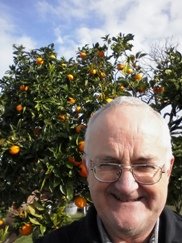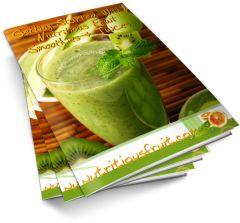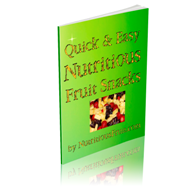Apricots: Origins - Consumption - Nutrition Facts - Health Benefits
|
|
|
Contents
- Geographic origin and regions grown
- History of consumption
- Common consumption today
- Nutrition Facts: Vitamins, minerals and phytochemical components
- Health Benefits: Medicinal uses based on scientific studies
- Bibliography
Apricots belong to a species of fruit called Prunus, which associates them with plums. As a result of this association, they are also called the Armenian plum, Prunus armeniaca or Armeniaca vulgaris in Latin.
Geographic Origins and Regions Grown
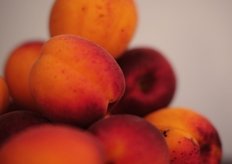 |
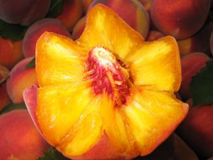 |
The exact origin of the fruit is unknown because of its wide cultivation that dates back to prehistoric periods. Archaeologists suggest that they may be native to northern and western China, Central Asia, Japan and Korea (2), (11).
History of Consumption
Their first cultivation in China dates back to 3000 BC (4). It is often thought to be a native fruit of Armenia because was cultivated there as well for many centuries.
It was introduced to Greece by Alexander the Great and Lucullus, a Roman General, who exported trees from Armenia to Europe around 100 BC. The widespread cultivation of the fruit during this time led to the confusion over their exact origin.
Persians also cultivated them for many years, with the dried fruits being an especially important commodity for the Persian economy.
Common Consumption Today
In 2005, Turkey was the leading producer followed by Iran, Italy, Pakistan, France, Algeria, Spain, Japan, Morocco, and Syria (3), (9).
Nowadays, they have become increasingly popular in Iran and Egypt. The growing season in Egypt is very short so Egyptians usually dry and store them or sweeten them with sugar and use them to make drinks.
Their production in the United States is somewhat low and is cultivated from seeds that were brought into the United States by Spanish travelers. Their main production in the United States takes place in California, Washington, and Utah (1).
They can hybridize with plums to produce fruits called plumcots, pluots, or apriums as well as peaches. This is achieved by grafting cultivars onto peach or plum rootstocks. These types of fruits taste and look like plums, but the plant grows like that of a plum or peach plant.
Popular apricot cultivars include Perfection, Wenatchee, Tilton, Moorpark, and Blenheim. Today they are most often consumed in a dried, preserved form.
Since the season in which they grow is very short, the fresh fruit are usually not readily available in supermarkets. They are also used to make jellies and jams.
Nutrition Facts: Vitamins, Minerals and Phytochemical Components
They contain vitamins A, alpha carotene, beta carotene, beta cryptoxanthin, lutein, zeaxanthin, vitamins C, E, K, B6, B12, niacin, thiamin, ribloflavin, folate, and pantothenic acid. They also contain minerals such as iron, calcium, magnesium, potassium, sodium, phosphorus, zinc, manganese, copper, and selenium as well as dietary fiber.
Health Benefits: Medicinal Uses Based on Scientific Studies
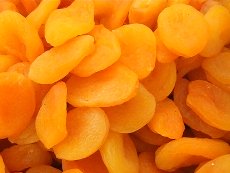 |
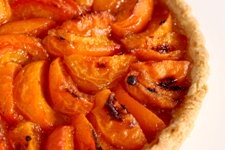 |
Its seeds contain cyanogenic glycosides in high concentrations. Cyanogenic glycosides are sugars bound to cyanogen (CN2) that can be found in the seeds of most stone fruits, leaves, and bark.
The cyanogen component of the seeds is a toxic, colorless gas that has a distinct odor and was used quite often during chemical warfare. Since the seeds are not normally consumed by individuals they do not pose a threat to humans.
The use of the seeds to treat cancer dates back to the year 502. Its oil was also used in England during the 17th century to treat ulcers and tumors.
Laetrile, also known as amygdalin, is a substance that can be extracted from the pits of fruits like papayas and apricots. In some countries laetrile has been used as an antineoplastic (anticarcinogenic) drug to treat cancer.
To date, unfortunately, clinical trials that involved laetrile did not produce any significant results (10). In 1980, the National Cancer Institute in the United States declared laetrile to be an ineffective treatment for cancer (5).
A compound extracted from Japanese fruit called MK615 has been shown to have anti-tumor activity against human pancreatic cancer cells, colon cancer cells and liver cancer cells in laboratory studies (6), (7), (8). So look out for the possibility of some powerful anti-cancer drugs being developed from Japanese varieties.
Europeans have used them as an aphrodisiac for many years. William Shakespeare’s “A Midsummer Night’s Dream” even refers to the apricot and a natural aphrodisiac, while John Webster’s book “The Duchess of Malfi” suggests that consuming apricots can induce childbirth.
Bibliography
- Agricultural Marketing Resource Center. (2008) Retrieved March 19, 2008 from http://www.agmrc.org/agmrc/commodity/fruits/apricots/
- Flora of China. (2008) Armeniaca Vulgaris. Retrieved March 19, 2008 from http://www.efloras.org/florataxon.aspx?flora_id=2&taxon_id=200010636
- Food and Agriculture Organization of the United Nations. (2007) FAO Statistics. Retrieved March 19, 2008 from http://faostat.fao.org/
- Huxley A, Griffiths M, Levy M. (1992) New RHS Dictionary of Gardening. Macmillan, 1:203-205.
- La2- Tri-County Farm-Fresh Produce Guide. (2008) The Apricot. Retrieved March 19, 2008 from http://www.tricountyfarm.org/oregon_apricots.asp
- Mori S, Sawada T, Okada T, Ohsawa T, Adachi M, Keiichi K. (2007) New anti-proliferative agent, MK615, from Japanese apricot "Prunus mume" induces striking autophagy in colon cancer cells in vitro. World Journal of Gastroenterology, 13(48):6512-7.
- Okada T, Sawada T, Osawa T, Adachi M, Kubota K. (2008) MK615 inhibits pancreatic cancer cell growth by dual inhibition of Aurora A and B kinases. World Journal of Gastroenterology, 14(9):1378-82.
- Okada T, Sawada T, Osawa T, Adachi M, Kubota K. (2007) A novel anti-cancer substance, MK615, from ume, a variety of Japanese apricot, inhibits growth of hepatocellular carcinoma cells by suppressing Aurora A kinase activity. Hepatogastroenterology. 54(78):1770-4.
- Olgun A, Adanacioglu H. (2006) Production and Marketing of Organic Dried Apricot and the Tendencies of Apricot Producers for the Future in Turkey: Case Study of Malatya. Acta Horticulturae, 717:271-280.
- The University of Texas MD Anderson Cancer Center. (2008) Glossary of Terms: Laetrile. Retrieved March 19, 2008 from http://www.mdanderson.org/patients_public/about_cancer/display.cfm?id=33540 ba-72df-11d4-aebd00508bdcce3a&method=displayfull
- Zhong G, Hua J. (1993) China floral encyclopedia. China Fiency Publishing.
Disclaimer
Nutritiousfruit.com provides this website as a service. Although the information contained within the website is periodically updated, no guarantee is given that the information provided is correct, complete, and/or up-to-date. The materials contained on this website are provided for general information purposes only and do not constitute legal or other professional advice on any subject matter. Nutrtiousfruit.com does not accept any responsibility for any loss, which may arise from reliance on information contained on this website. The information and references in this website are intended solely for the general information for the reader. The content of this website are not intended to offer personal medical advice, diagnose health problems or to be used for treatment purposes. It is not a substitute for medical care provided by a licensed and qualified health professional. Please consult your health care provider for any advice on medications.
Didn't find what you were looking for? Search here...

Amazon Search Box:
Did you like this page?
|
|
|
